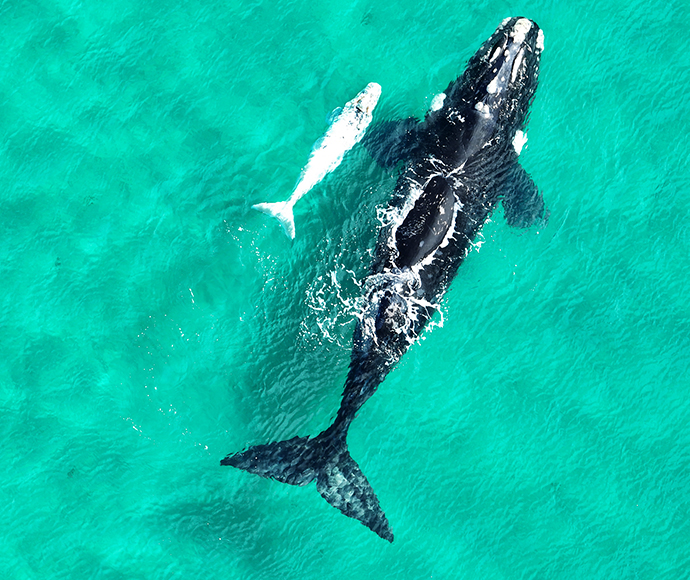The southern right whale mother and calf which spent the day at Long Reef yesterday moved south overnight to Malabar.

ORRCA (Organisation for the Rescue and Research of Cetaceans in Australia) confirmed the pair continued their southward journey from Long Reef and are resting again in shallow waters off Malabar Beach.
NSW ³Ô¹ÏÍøÕ¾ Parks and Wildlife Service (NPWS) is appealing for people to keep their distance to avoid disturbing the whales which might cause them to move on, tiring them unnecessarily.
All watercraft, including vessels, surfers, jet skis must stay at least 300m away from the pair and drones are strictly prohibited within 100 m of the whales, in all directions.
The whales and boating activities in the area are being monitored from the air, water and land. NPWS is working with ORRCA, Gamay Rangers, Marine Rescue, Police, Transport for NSW and Surf Life Saving NSW to ensure all water users are abiding by approach distance regulations.
Undisturbed time in shallow, sandy bottom bays and protected beaches is critical for southern right whale calves. At approximately 3-to-4 weeks, this calf needs to nurse and consume around 300 litres of milk per day to gain the strength necessary for the long swim back towards the Antarctic.
NPWS Marine Wildlife Team Member Andy Marshall said, “We know how exciting it is to see a southern right whale and its calf up close, but we’re asking everyone to please keep your distance. The biggest threat to the survival of southern right whales in NSW waters is disturbance from people getting too close.”
“Approaching the pair in a boat, jet ski, kayak or surfboard or with a drone not only compromises a calf’s ability to nurse, but it can also drive the whales away from their resting places and out into deeper waters, where they are exposed to attack by orcas, also known as killer whales, and sharks.”
The best way to catch a glimpse of the whales is from one of Sydney’s headlands.







